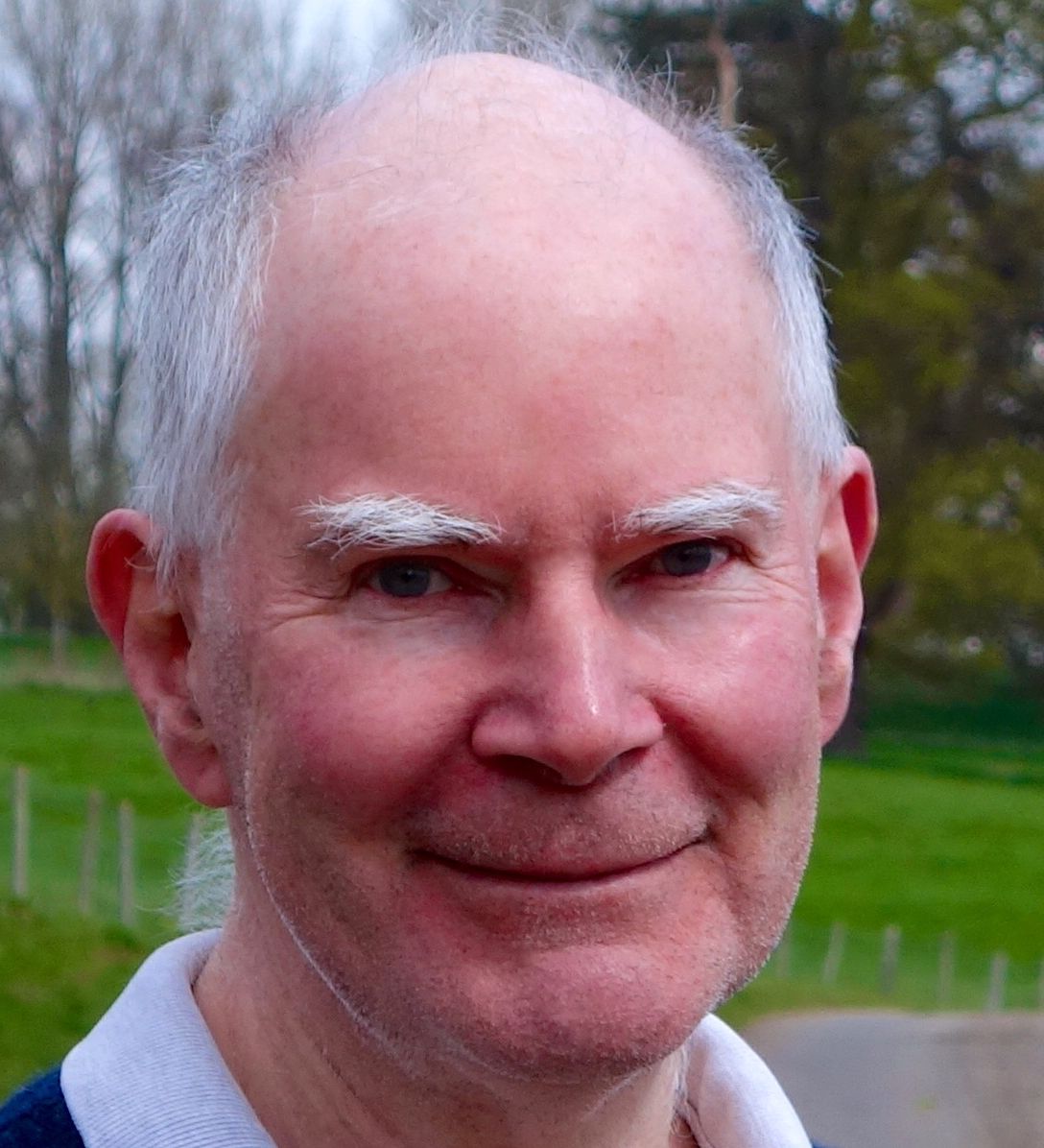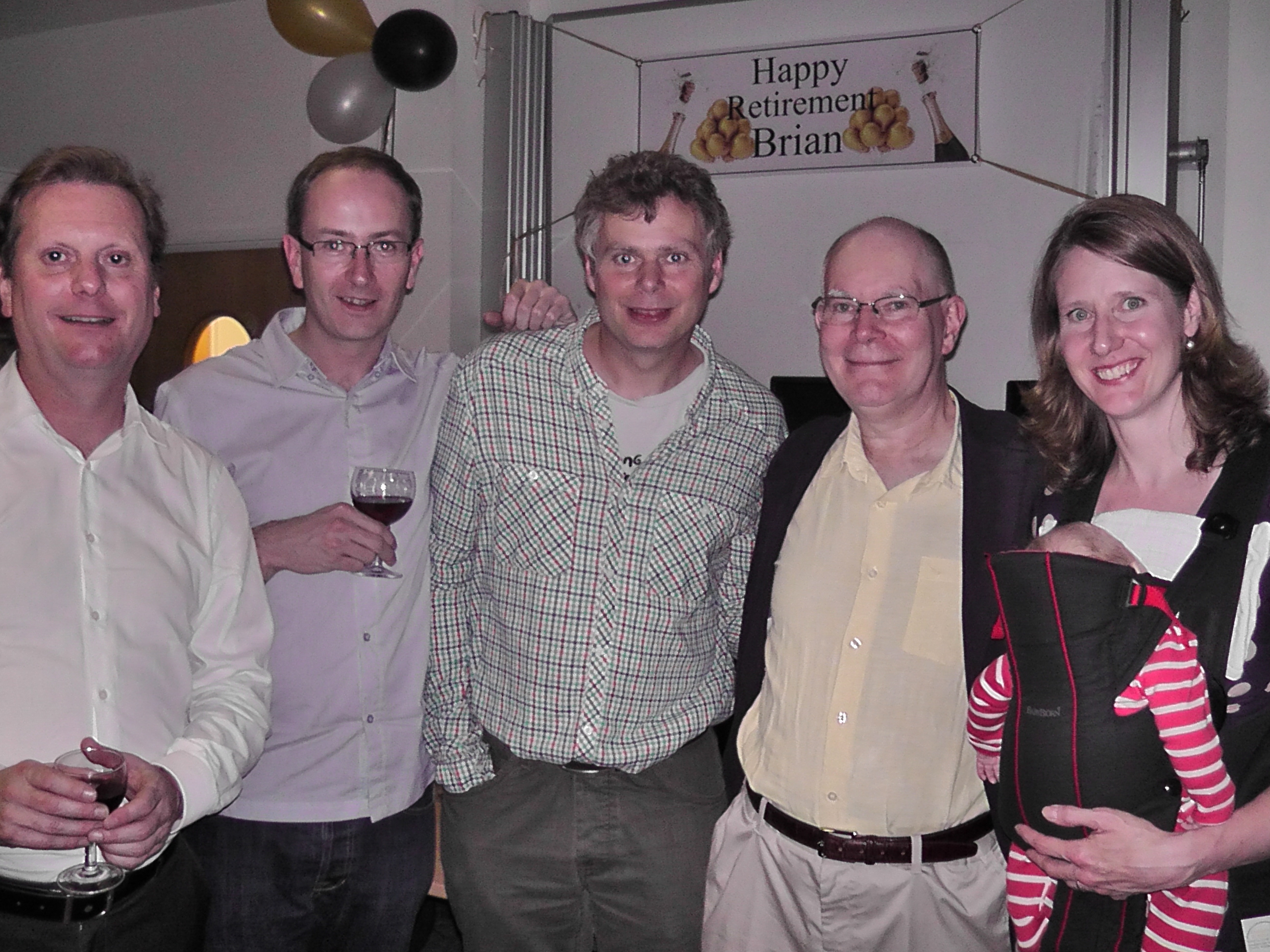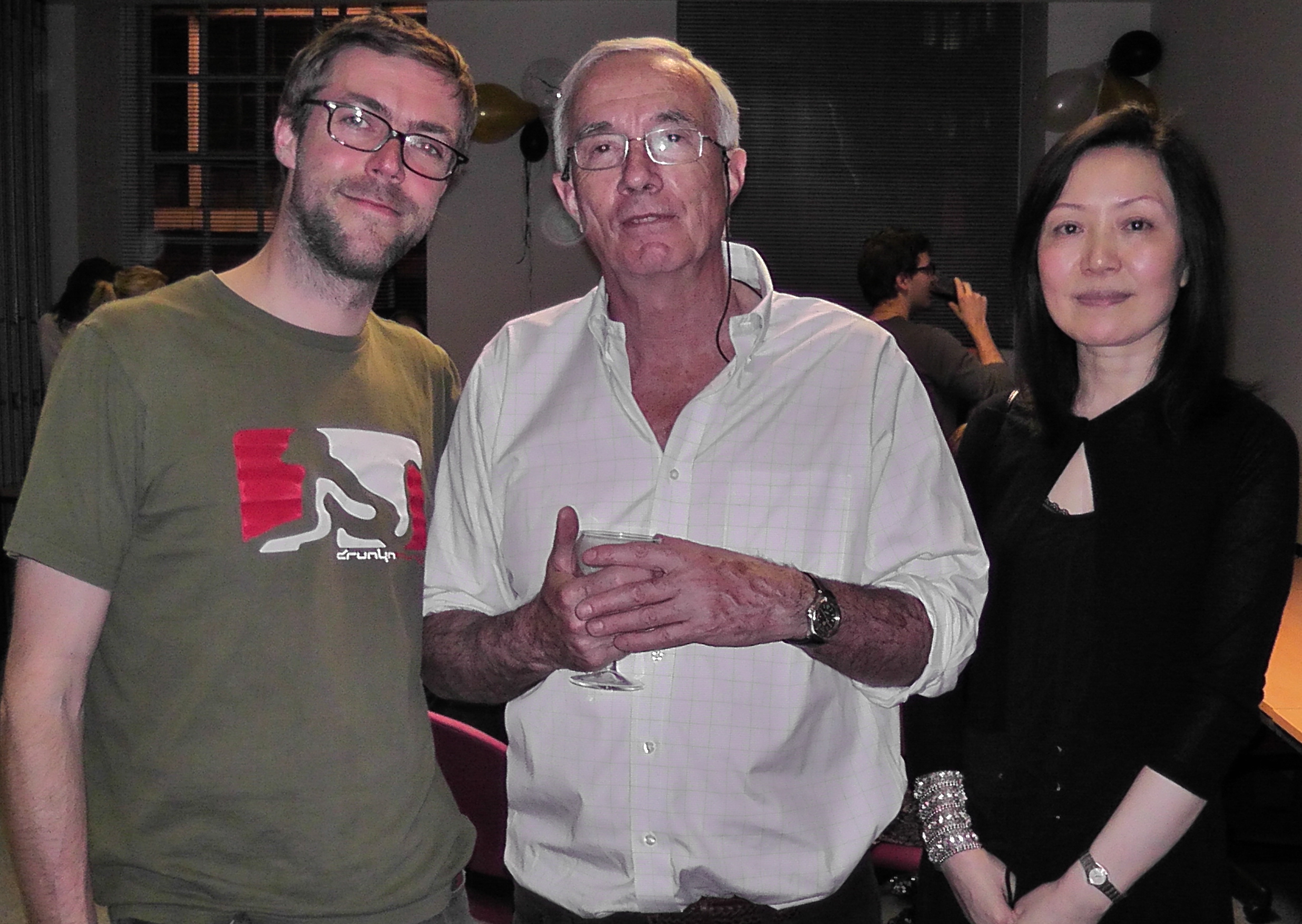Microbial Genomics: Standing on the Shoulders of Giants
Professor Brian G Spratt

Brian Spratt is a professor in the Department of Infectious Disease Epidemiology at Imperial College London. In the 1970s his research covered the mechanism of action and resistance to penicillin; more recently he has worked on highlighting the importance of recombination in bacterial pathogens. In 1998, together with Martin Maiden and others, he developed multi-locus sequence typing (MLST) and, with Ed Feil, the eBURST method for displaying the relatedness of strains within bacterial populations. He closed his laboratory in 2012 and is now semi-retired.
Below, Brian discusses his research, peers who influenced him and what makes a giant in scientific research.
We all depend on the work of our scientific predecessors, usually to learn from, but occasionally to kick against. Our predecessors produced the incremental gain of knowledge by which any field advances. A very few were giants at whose achievements we simply marvel. For my generation, starting their postgraduate work in the late 1960s, the world of biology seemed full of giants. As a microbiologist with particular interests in microbial genetics, my giants included Francis Crick and Jim Watson, Sydney Brenner, Jacques Monod and François Jacob, Seymour Benzer, Marshall Nirenberg, and many others. This was a heroic period, and the giants were particularly tall, or so it seemed, but in any generation there are giants of varying heights.
What makes a scientist a giant? Well, they obviously make some very important contribution, but for me, a giant typically achieves something far more difficult, making a series of very important contributions throughout their career. In this short piece I discuss a few giants with whom I have worked, or who have influenced me, within the context of the work we were doing at the time.
After my PhD with Robin Rowbury, in the Botany and Microbiology department at University College London, I decided to work at Princeton University with the biochemist, Arthur B (Art) Pardee. Art is undoubtedly a scientific giant having made several major contributions, including discovering or co-discovering ribosomes, feedback inhibition and allosteric regulation, and for his famous paper with François Jacob and Jacques Monod (the ‘PaJaMo’ experiment) that led to our basic understanding of gene regulation by repression. He has continued to make important discoveries since he switched to work on mammalian cells and cancer research and I see he is still publishing at the age of 94!
When I arrived in 1973, Art’s laboratory had only three people working on bacteria, as by then he was working almost exclusively with mammalian cells. I was interested in bacterial cell division at the time, but after a few months I still hadn’t decided what to do. One morning I found that Pardee had put a couple of papers on my desk from Jack Strominger’s laboratory (another giant who I got to know quite well in the 1970s). The two Strominger papers that landed on my desk described their recent success in detecting proteins in bacteria that interacted with penicillin, using covalent affinity chromatography. I knew that penicillin at low concentrations was a specific inhibitor of Escherichia coli cell division and reading these papers immediately crystallised what I wanted to do in Pardee’s laboratory – to develop a much more convenient and higher throughput method of detecting these proteins, that could be used both for kinetic studies and in mutant screens to identify the protein to which penicillin bound to inhibit cell division.
The work went well and fairly soon I had enough of a story to write a couple of papers. Art was always very supportive but was not really involved in the work I was doing. He was remarkably generous in recognising this and insisted that he didn’t want his name on any of my papers, excepting the first one, since he thought his name might help the paper get into Nature! I was also fortunate that Pardee’s move into eukaryotic work meant that I could take my work with me when I moved back to the UK.
I had worked rather independently during my PhD and I appreciated Art’s hands-off supervision of my post-doctoral work, and learnt that supervision was not about micro-management but rather, having decided on a project, leaving good people to find their own way and grow as scientists, always being available when needed. Some of my postdocs probably recognise this feature in my own supervisory style, although they probably ascribe it (with considerable justification) to pure laziness.
Even after 40 years of research, the papers from my time with Pardee, on the development of convenient methods to identify and study the physiological roles of the enzymes that interacted with penicillin (penicillin-binding proteins; PBPs), are the ones of which I am most proud, due in large part to that special satisfaction of your first significant independent research (Spratt and Pardee, 1975; Spratt, 1975). This work gave me the much needed confidence to do independent research and I often wonder what path my career would have taken if Art had not dropped those papers onto my desk.
I continued to work on PBPs until, in 1987, I did my first work with pathogens, looking at the sequence differences between the PBP2 genes of penicillin-susceptible and penicillin-resistant clinical isolates of Neisseria gonorrhoeae. The results were a surprise and suggested that the decreased affinity of PBP2 for penicillin in resistant gonococci was not due to the gradual accumulation of point mutations, but to the formation of mosaic (or hybrid) PBP 2 genes by recombination with the PBP 2 genes of closely-related commensal Neisseria species (Spratt, 1988). By the following year, Qian-Yun Zhang and Chris Dowson had extended this work to show that a similar process of inter-species recombination had occurred to generate mosaic PBP genes in N. meningitidis and Streptococcus pneumoniae clinical isolates that had increased resistance to penicillin.
One of the referees of my 1988 gonococcal paper suggested I might do well to read the work of Bob Selander, who at that time I had never heard of. Selander was a eukaryotic population biologist but, from about 1980, he had turned his attention, and his key methodology (multilocus enzyme electrophoresis; MLEE), to characterise large populations of disease isolates of many of the most important bacterial pathogens. His laboratory was pioneering because, although others were starting to look at bacterial pathogen populations at the same time, they mostly did not characterise isolates using MLEE, which is based on sound population genetic principles, indexing (indirectly) variation in multiple house-keeping genes that should largely be neutral. This highly influential work was carried out with a number of graduate students, postdocs and collaborators, many of whom went on to have their own distinguished careers, including, Dominique Caugant, Bruce Levin, Howard Ochman, James Musser and Thomas Whittam.
MLEE was also, of course, the model for our development in 1998 of multilocus sequence typing (MLST), with Martin Maiden, Mark Achtman and others (Maiden et al., 1998). For the breadth and pioneering nature of his studies, which defined the general features of pathogen populations, and for the promotion of the use of selectively neutral genetic variation for characterising bacterial isolates, I see Selander as a giant in the history of the development of bacterial population biology.
One of the conclusions of Selander’s studies was that recombination was rare in bacterial populations since they appeared to be highly clonal, as they had high levels of linkage disequilibrium between the alleles at different loci, and isolates with the same MLEE profile could be found from different countries, separated in their isolation dates by several decades. This conclusion seemed odd as our studies on N. meningitidis house-keeping genes (carried out by Ed Feil and Jiaji Zhou), and those of other laboratories with E.coli, found clear evidence for recombination when individual house-keeping genes were sequenced from multiple isolates of the same species. The conflict between the conclusions of Selander’s MLEE studies of pathogen populations, and those from sequencing house-keeping genes led to further papers (e.g. Feil et al., 2001), which helped to establish the now dominant view that recombination is frequent in most bacterial species. It also led to a close collaboration with an undoubted giant, John Maynard Smith (JMS), a colleague at Sussex.
JMS was a truly remarkable man who made enormous contributions in several completely different areas of biology, and who had the uncanny ability to look at a new area of biology and immediately recognise the key problems and to make insightful and often major contributions. I had known JMS from the early 1980s as his wife, Sheila, worked on our Microbial Genetics corridor and he would come down to see if she was ready to go home, and would sometimes wander into my laboratory to see what was going on. I showed him the manuscript of my 1988 paper proposing inter-species recombination in the PBP 2 genes of penicillin-resistant gonococci. Fortunately he agreed with my interpretation and the work fired John’s interest and led to a number of co-authored papers, of which ‘How clonal are bacteria?’ was perhaps the most influential (Maynard Smith et al., 1993). Some flavour of JMS’s work on bacteria and his inimitable approach to analysing DNA sequence data may be found in an obituary that I wrote (Spratt, 2004).
By the early 1990s, bacterial genome sequencing projects were underway, but progress was slow, since it required the time-consuming generation of a series of overlapping chromosomal fragments (typically using cosmids or BACS), and the generation of the sequence of each fragment (initially by manual sequencing), which could then be joined together to produce a final genome sequence. In April 1995, the Wellcome Trust organised a meeting at which Craig Venter was to talk about his unpublished work on the shotgun sequencing and assembly of the genomes of Haemophilus influenzae and Mycoplasma genitalium. For those lucky enough to be invited, it was an extraordinary event and it was immediately clear to all of us that a revolutionary change had occurred in microbiology. Although Venter’s commercial approach to genome sequencing has been the subject of considerable criticism, his demonstration with the H. influenzae work that very large numbers of sequence reads could be assembled, with appropriate software and computing power, was crucially important and greatly speeded up the generation of the genome sequences of bacterial pathogens, from which we have all benefited. To me he is undoubtedly a giant.
My final giant – a mega-giant – is the Wellcome Trust, to whom I have a great personal debt, as they paid my salary and funded my laboratory continuously for 30 years. They had the wisdom to respond rapidly to Venter’s work by increased support of pathogen sequencing at the Wellcome Trust Sanger Centre (now the Sanger Institute) which, by recruiting highly talented individuals, gave the UK an extremely strong position in pathogen genome sequencing and, subsequently, in the fusion of high-throughput genome sequencing with bacterial population biology (population genomics).
I cannot finish without crediting the hard work of a number of outstanding PhD students and postdocs who worked in my laboratory over the years. Some of these are shown in Figures 1 and 2.

Figure 1. Former members of my laboratory, London 2012. Left to right: Mark Enright, David Aanensen, Ed Feil, B.G.S. and Angela Brueggemann.

Figure 2. Left to right: Bill Hanage, my colleague Roy Anderson, and Jiaji Zhou.
References
Feil EJ, Holmes EC, Bessen DE, Chan M-S, Day NPJ, Enright MC, Goldstein R, Hood DW, Kalia A, Moore CE, Zhou J and Spratt BG. Recombination within natural populations of pathogenic bacteria: short-term empirical estimates and long-term phylogenetic consequences. Proc. Natl. Acad. Sci. USA 2001:98;182–187. PMID: 11136255
Maiden MCJ, Bygraves JA, Feil E, Morelli G, Russell JE, Urwin R, Zhang Q, Zhou J, Zurth K, Caugant DA, Feavers IM, Achtman M and Spratt B.G. Multilocus sequence typing: a portable approach to the identification of clones within populations of pathogenic microorganisms. Proc. Natl. Acad. Sci. USA 1998:95;3140–3145. PMID: 9501229
Maynard Smith J, Smith NH, O'Rourke M and Spratt BG. How clonal are bacteria? Proc. Natl. Acad. Sci. USA 1993:90;4384–4388. PMID: 8506277
Spratt BG. Distinct penicillin-binding proteins involved in the division, elongation, and shape of Escherichia coli K12. Proc. Natl. Acad. Sci. USA 1975:72;2999–3003. PMID: 1103132
Spratt BG and Pardee AB. Penicillin-binding proteins and cell shape in E. coli. Nature 1975:254;516–517. DOI: 10.1038/254516a0, PMID: 1091862
Spratt BG. Hybrid penicillin-binding proteins in penicillin-resistant gonococci. Nature 1988:332;173–176. PMID: 3126399
Spratt BG. John Maynard Smith (1920–2004). Infection, Genetics and Evolution 2004:4;297–300 DOI: 10.1016/j.meegid.2004.06.004
